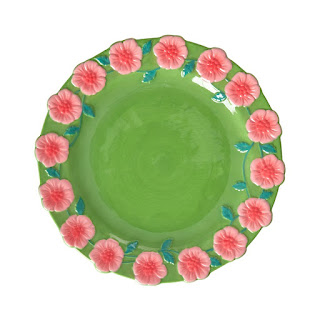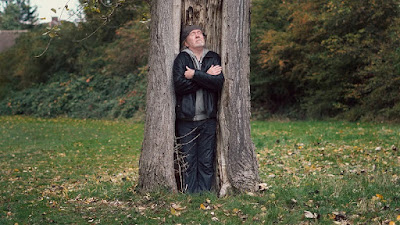There is little doubt the late designer
Vivienne Westwood's legacy is often defined by her legendary corsets.
 |
Audrey Corseted Dress
SS 2023 Collection
in the Shop window of
Vivienne Westwood London Mayfair flagship |
And currently as part of London Craft Week, the fashion house is hosting an exhibition of a selection of her revolutionary corsets in her London Mayfair flagship store, charting the history of her creations, from the first corset she produced in the mid-80s to those from her most recent collection before her death in December.
Each piece in the "Vivienne Westwood Corsets: 1987 to Present Day" show demonstrates Westwood's ingenuity in corsetry design. The show also includes those created by her partner and husband, Andreas Kronthaler.
As evidenced in her creations, Vivienne Westwood reinvented the corset by updating a structure that dates to the 18th century.
Exploring the house’s subversion of corsetry from 1987 to the present day, "Vivienne Westwood Corsets" examines the late designer’s approach to underwear as outerwear.
In the shop window is the Audrey Corseted Dress featuring an ivory silk satin column design, with a sculpted corset top. The iconic Westwood broken pearls cascade from the neckline, lending a classic style an asymmetrical touch. It was first shown in the couture bridal collection of 2022, evoking the golden age of the silver screen,
The exhibition pieces on display in the shop are not labeled but visitors can get detailed information on each piece via QR code scanning, through which one can also hear experts discuss the featured corset pieces, including narrations by Alexander Fury, fashion journalist, author and critic.
 |
Above, Sunday Corset
Vivienne Westwood Spring-Summer 2023 "Born to Rewild" Collection, inspired by the sweetheart curved line of the "Gigi" corset, from the Andreas Kronthaler for Vivienne Westwood collection. |
 |
| Above, from left to right, Court Corset Dress, Short-sleeved Court Corset, and Historcal Corset. |
The "Vivienne Westwood Corsets" exhibition illustrates the historical corset as a constant source of inspiration for Vivienne Westwood's collections through her creative life as the designer proceeded to refine her vision of extreme silhouettes.
From the designer's Gold Label Spring-Summer 2012 "War & Peace" collection is the Short-sleeved Court Corset of which the Westwood said In her collection notes, "For some time I wanted to do oversized historical corsets. I thought I could give them a feeling of armour, worn as a jacket they would look tough - like a soldier or a biker. The corsets we chose to oversize are from the England of Charles II".
On the elaborately embroidered Court Corset Dress also from the designer's Gold Label Spring-Summer 2012 "War & Peace" collection, Westwood expressed in the show notes, "By engaging with human genius, I have tried to capture the past in my fashion. But we can never repeat, we are swept along by the changing times and our own experience. When we try to imitate we find ourselves doing something new. I see fashion as a proposal, a way for people to look more wonderful."
The Historical Corset from the Gold Label autumn-winter 2012/13 "London" collection is a one-shoulder corset that illustrates Westwood's subversion of historical cuts to inspire and sculpt the shape of the Gold Label collection. The asymmetry in this piece is an element that is recurrent throughout Vivienne Westwood designs. In most cases, this is a reference to the movement of drapery against the body within paintings, the idea of "spontaneous gestures, then captured and frozen in cloth." said Alexander Fury.
The Sunday Corset from Westwood 's Spring-Summer 2023 "Born to Rewild" Collection, inspired by the sweetheart curved line of the "Gigi" corset, was from the Andreas Kronthaler for Vivienne Westwood collection. The Corset forms a base for a fluid draped triangle, which is pinched at the corners, then sweeps and twists across the shoulders, referencing the original '90s Sunday dress.
Two standout pieces for men are corset jackets embroidered with glass beads to represent the male torso. They were part of the first menswear show - MAN - in Milan in 1996 and created in collaboration with Mr Pearl, the renowned corsetier who famously had an 18in waist from wearing corsets.
The Martyr to Love jacket is made in silk with glass beads. With this piece, we witness a Surrealism of clothing through a nude body, in flesh. The art references here adhere to the stylisation of wounds in medieval paintings and inspired the treatment of those marks. According to author Alexander Fury, the jacket itself is worn over a tight corset, recalling a male 19th century tradition of wearing corsets and foundation garments, to help achieve a figure reminiscent of classical Greek sculpture.
The Slave to Love jacket also features glass beads accentuating a masculine physique. It played with ideas and ideals of masculinity and femininity, said Alexander Fury, corseting the male figure, yet creating an overall look that speaks of heroic masculinity.
 |
| Above left, Martyr to Love jacket; right, Slave to Love Jacket. |
 |
| Above left, Aphrodite Corseted Dress; and right, New Bellini Dress, both from Spring/Summer 2023 Collection |
The Aphrodite Corseted Dress is draped in silk chocolate brown satin chiffon, accompanied with gold-crystal net, a contemporary interpretation of the original silver crystal Cocotte bridal dress of the 1998 Spring Summer collection. The skirt is created from just one seamless panel of crystal net to create a flattering line, showcasing Westwood’s zero-waste cutting method.
 |
Kenyan-Mexican actress Lupita Nyong’o had worn a custom made Vivienne Westwood couture corset dress at the Black Panther: Wakanda Forever premiere in Lagos, Nigeria, last November.
The "Vivienne Westwood Corsets" exhibition demonstrates the important links of the corset to historical dress and culture, and it continues to serve as a valuable source of inspiration for Vivienne Westwood collections today. |
The Vivienne Westwood Corsets exhibition is open until 21 May 2023 in the house’s flagship boutique at 44 Conduit Street, London.
In celebration of the Vivienne Westwood Corsets exhibition, a limited-edition jewellery collection has been created. Featuring a three-dimensional charm of the original Westwood Portrait corset, which first appeared in the Vivienne Westwood Harris Tweed Autumn-Winter 1987/ 88 collection, it is accented with engraved branding for a bold appearance.
All photos by Lucia Carpio.











.jpg)























 V
V










